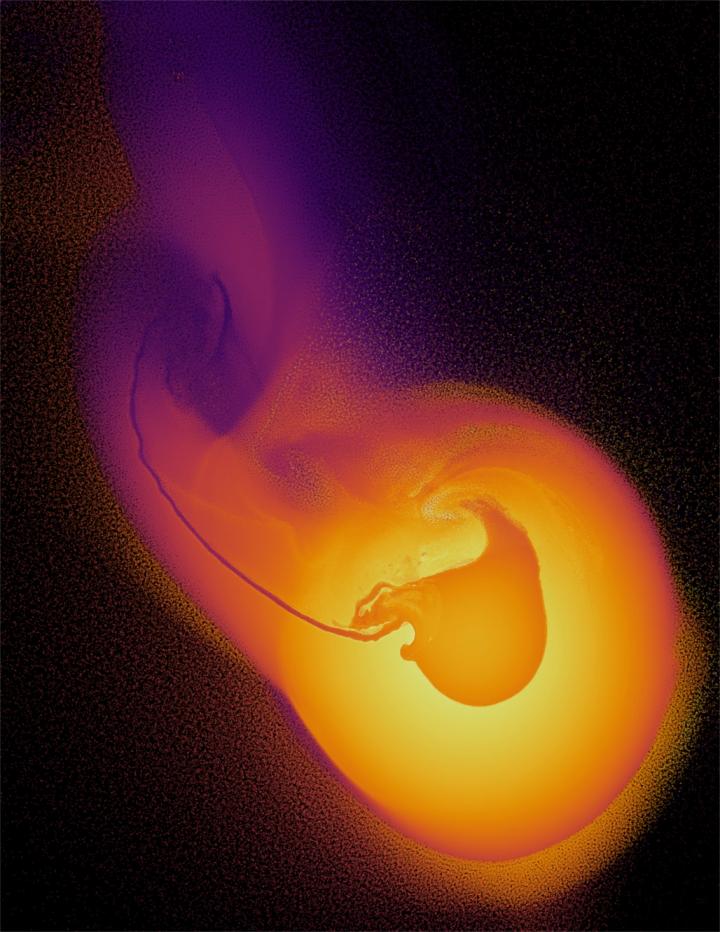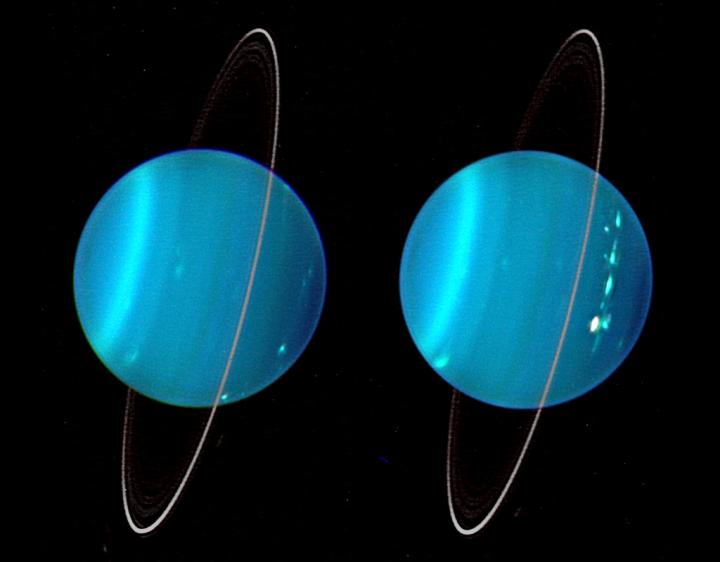Something Big Crashed into Uranus and Changed It Forever
It turns out that Uranus is so weird because of a massive collision billions of years ago.
A new study confirms that this collision with a huge object — which was approximately twice the size of Earth — could have led to the planet's extreme tilt and other odd attributes.
Uranus, the planet with the unforgettable name, is unique in a number of ways. "All of the planets in the solar system are spinning more or less in the same way … yet Uranus is completely on its side," Jacob Kegerreis, the new study's lead author and a researcher at Durham University's Institute for Computational Cosmology in the U.K., told Space.com. And this isn't the only thing that makes the planet so strange.
Uranus also has a "very, very strange" magnetic field and is extremely cold, even though it "should" be warmer, according to Kegerreis. In this study, Kegerreis and his team of astronomers seek to explain many of the planet's odd features by attributing them to a collision with a massive, icy object about 4 billion years ago. [Photos of Uranus, the Tilted Giant]
To better understand how the impact affected Uranus' evolution, the team used a high-powered supercomputer to run a simulation of massive collisions — something that has never been done before. This study confirms an older study that suggested Uranus' significant tilt was caused by a collision with a massive object.

The researchers suspect that this object was probably a young protoplanet, made up of rock and ice. This collision is "pretty much the only way" that we can explain Uranus' tilt, Kegerreis said.
Amazingly, Uranus retained its atmosphere after this impact. The researchers think that this is because the object only grazed the planet, hitting it hard enough to change its tilt but not enough to affect its atmosphere, according to a statement from Durham University.
Get the Space.com Newsletter
Breaking space news, the latest updates on rocket launches, skywatching events and more!
It's likely that this type of event isn't uncommon in the universe: "All the evidence points to giant impacts being frequent during planet formation, and with this kind of research, we are now gaining more insight into their effect on potentially habitable exoplanets," Luis Teodoro, study co-author and researcher at the BAER/NASA Ames Research Center, said in the statement.

But this enormous object crashing into Uranus did more than just knock it into a new tilt. According to this research, when the object hit Uranus, some of the debris from the impact may have formed a thin shell that continues to trap heat coming from the planet's core. This could at least partially explain why Uranus' outer atmosphere is extremely cold.
According to Kegerreis, this collision could also explain two other oddities about the tilted planet. First, it could explain how and why some of Uranus' moons formed. The researchers think that the impact could have knocked rock and ice into the young planet's orbit — debris that later became some of Uranus' 27 moons. Additionally, they think that the collision could have altered the rotation of any moons that already existed at the time. Last year, a separate study also explored this aspect of the collision.
The researchers also suggest that the collision could have created molten ice and lumps of rock inside the planet, which tilted its magnetic field, according to the statement.
Following this study, the researchers hope to study this collision with even higher-resolution simulations to better understand Uranus' evolution, according to Kegerreis. He also noted that the team aims to study Uranus' chemistry and the different ways that an impact like this could have affected its atmosphere.
This work was published in The Astrophysical Journal on July 2, 2018.
Email Chelsea Gohd at cgohd@space.com or follow her @chelsea_gohd. Follow us @Spacedotcom, Facebook and Google+. Original article on Space.com.
Join our Space Forums to keep talking space on the latest missions, night sky and more! And if you have a news tip, correction or comment, let us know at: community@space.com.

Chelsea “Foxanne” Gohd joined Space.com in 2018 and is now a Senior Writer, writing about everything from climate change to planetary science and human spaceflight in both articles and on-camera in videos. With a degree in Public Health and biological sciences, Chelsea has written and worked for institutions including the American Museum of Natural History, Scientific American, Discover Magazine Blog, Astronomy Magazine and Live Science. When not writing, editing or filming something space-y, Chelsea "Foxanne" Gohd is writing music and performing as Foxanne, even launching a song to space in 2021 with Inspiration4. You can follow her on Twitter @chelsea_gohd and @foxannemusic.









